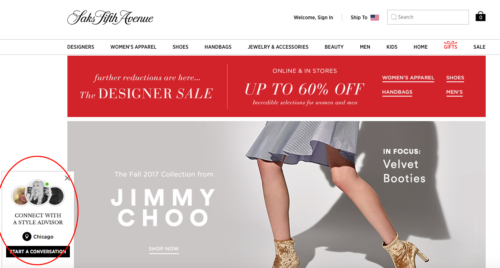Reflections on the Whole Foods Acquisition
It’s hard to believe that a mere 20 years ago, the only reason a consumer would visit Amazon.com was to buy books. And now — through a combination of innovations and acquisitions — shoppers are able to purchase just about anything they could ever want from Amazon — from electronics and toys to apparel and jewelry.
And now, Amazon has its sights set on grocery. A few years ago, Amazon launched Amazon Fresh, its grocery delivery service. And earlier this month, the ecommerce giant announced it would acquire Whole Foods for $13.7 billion, which has the potential to dramatically disrupt the way consumers shop for groceries.
The Next Frontier for Ecommerce
According to the U.S. Department of Commerce, ecommerce accounted for 11.7% of total retail sales in 2016. That’s a 15.6% increase over 2015. While more and more transactions happen online, grocery has traditionally fallen behind — especially in the U.S.
Though the majority of groceries are still purchased in a store, there is definitely a growing trend of consumers who are shopping for food online. In fact, this trend will likely accelerate with the Whole Foods acquisition, and I’d argue that grocery will become the next frontier for ecommerce.
Now, that’s not to say that traditional grocery stores will be a thing of the past. Instead, consumers’ expectations will evolve, requiring grocery retailers to rethink the way they operate.
Brick and Mortar Isn’t Going Away
It seems like we’re constantly bombarded with headlines about another retailer closing its brick and mortar locations. But there’s also plenty of evidence of another trend — online-only retailers such as Fabletics, Warby Parker, and yes, Amazon — opening physical store locations. In fact, when I recently attended an IRCE presentation by Gregg Throgmartin, President and General Manager for Fabletics, he argued that “It’s one of the best times to open a brick and mortar store.”
Obviously, ecommerce continues to grow, but physical stores provide the opportunity to experience products first hand — an experience consumers simply can’t get when they’re shopping online. A shopper can feel the fabric of a dress or try on a new lipstick shade before committing to a purchase. Or, in the case of Whole Foods, she can hand select her own produce.
But stores can no longer survive by simply being a place to conduct a transaction. Today, consumers go to a store expecting to be entertained and inspired.
Clearly, Amazon recognizes the consumer’s desire for great in-store experiences, which is why they chose to acquire a grocery chain that goes beyond the transaction. For example, at the Whole Foods store in the Lincoln Park neighborhood of Chicago, visitors can enjoy a glass of wine after work, meet a friend for lunch, or enjoy a children’s cooking class with the family. These unique experiences allow consumers to connect with the brand on a deeper level — and likely lead to future purchases. The consumer that attended a wine tasting opts to purchase a few bottles of the wine they tasted for a housewarming party. And the mom that attended the cooking class returns to Whole Foods to purchase the items needed to recreate the meal from the class.
It’s Time for Grocery Retailers to Marry the Online and In-Store Experience
If you’re a grocery retailer, don’t be discouraged about the news of Amazon’s acquisition of Whole Foods. Instead, use this as an opportunity to rethink your in-store and online strategies and focus on creating a seamless shopping experience for shoppers across all channels.
Leverage Your Brick and Mortar Stores
If you have brick and mortar grocery stores, think of ways you can leverage this asset to create memorable experiences for your shoppers that go beyond a transaction. For example, offer cooking classes that’ll entertain and inspire consumers. Or offer spaces and opportunities for shoppers to socialize. According to a Capgemini study, 60% of consumers want stores to provide a social experience with friends and family.
Offering rich experiences to your in-store shoppers will allow you to forge deep connections with them. And I’m willing to bet that those who visit your store for a cooking class or a wine tasting will stay to pick up some groceries, too.
In addition, look for opportunities to leverage your brick and mortar stores as a tool to help drive your online success. One way retailers are doing this is by offering in-store pick up of ecommerce sales. For example, 55% of all digital sales for Target are fulfilled in-store. Offering this service not only saves your customers time, it also has the potential to drive additional in-store sales.
Finally, think of ways you can bring the online shopping experience to your brick and mortar stores, something Amazon has done extremely well with their physical book stores. Start by making sure that all of the information available to your shoppers online is also available in store. For example, prominently featuring star ratings and reviews alongside your products to boost customer confidence.
Bolster Your Online Presence
A growing number of consumers are browsing for and purchasing groceries across channels. According to a study by Nielsen and the Food Marketing Institute, 23% of American households are buying food online today. And 72% of shoppers expect to buy groceries online in the future.
Now’s the time to bolster your online presence. For starters, make sure your website provides a great user experience for your shoppers and includes plenty of information about your products and your stores so shoppers know exactly what to expect. PowerReviews research found that poor product information is the top irritation for consumers when browsing for products online.
In addition to your own product descriptions, be sure to prominently feature product ratings and reviews on your website so consumers can hear about the experiences of other consumers. As an added bonus, user-generated content — such as ratings and reviews — can ensure your product pages are showing up in search engine results.
But it’s not enough to simply collect reviews. Instead, be sure you’re regularly monitoring reviews and acting on the insights they provide in order to improve products and the customer experience.
I’ve said it before, and I’ll say it again. Retailers that survive — and thrive — are those that successfully marry the online and in-store shopping experience. Rather than being discouraged by the Amazon acquisition of Whole Foods, use this as an opportunity to rethink your online and in-store strategy.




